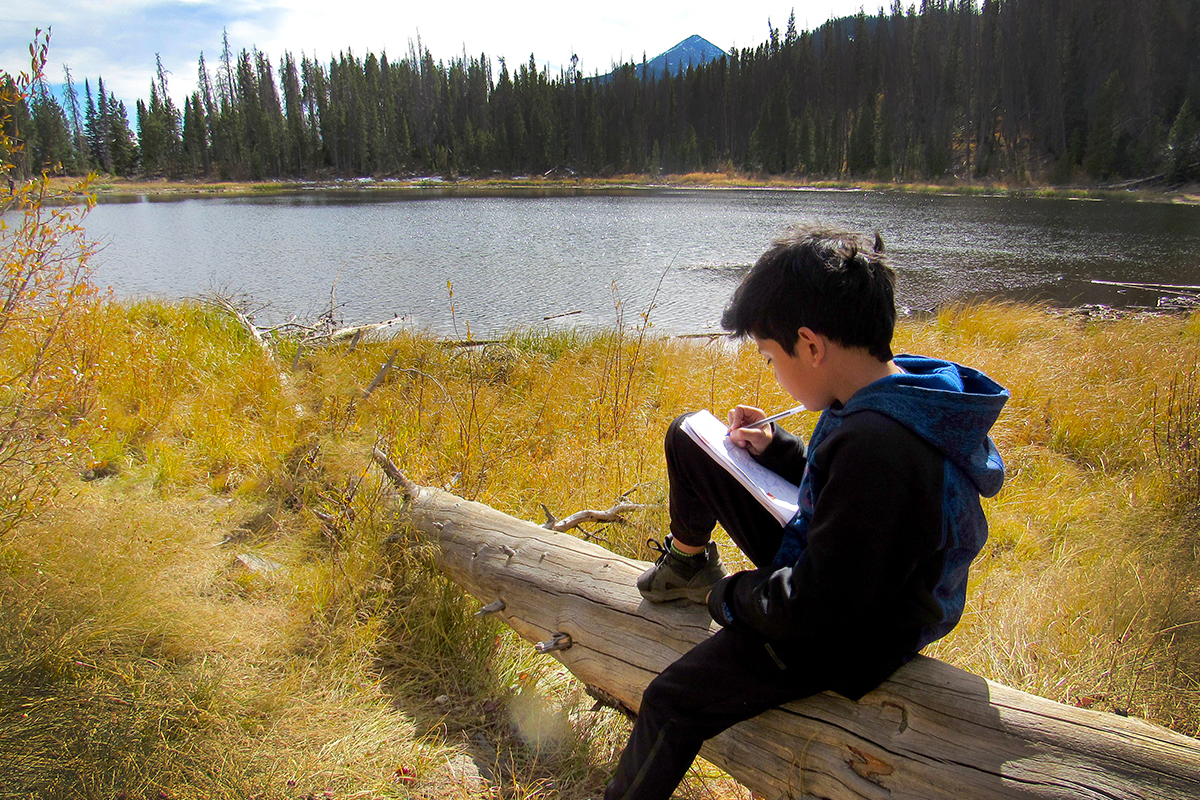
At Keystone Science School we pride ourselves on the experiential learning opportunities that our programming provides students. You might wonder, then, why all of our curriculum pairs with a journal. Why do we encourage students to write about what they are learning when that’s what they do everyday at school? Isn’t the point of going to outdoor school to experience the trees, the rocks, and the streams, that don’t exist inside the four walls of their classroom?
In 1983, the philosophy and pedagogy of education was reimagined with the publication of Howard Gardner’s theory of “Multiple Intelligences.” The developmental psychologist had rewritten the story of intelligence. Our understanding of how we develop intelligence was broadened to include eight different competencies: linguistic, mathematical, spatial, kinesthetic, musical, interpersonal, intrapersonal, and naturalistic. It was understood and applied by teachers that everyone was strongest in one of those nine intelligences and that was also how they best learned new information.
As neuroscientists have gained a better understanding of how our brains learn through years of research, the “Theory of Multiple Intelligences” has been criticized and updated. We’ve come to better understand that we learn new information when all intelligences, or as many as possible, are used to teach new information. When schools come to KSS, that’s what we try to do! Although we are big fans of kinesthetic and naturalistic learning, we know that students will come away with a better understanding of their experience if we incorporate as many learning styles as possible.

Let’s take forest ecology, for example. Students will very likely observe trees and then be asked to draw the tree in their journal. Then after making deeper observations, they may use a dichotomous key in the journal to identify multiple types of trees in a given area. If students are doing stream testing for aquatic ecology, they will write their test results in their journal as well as come up with a conclusion of their stream survey that incorporates all of their tests. Other journals include maps of watersheds or fault lines so that students can see a bigger picture of where they currently are located. All in all, the journal we provide is meant to pair with each curriculum to further boost student’s learning while they are at Keystone Science School!




